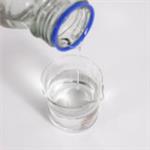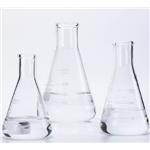Chemical Properties
colourless liquid
Uses
n-Tridecane is used as a distillation chaser. It is a component of various fuels and solvents used in industry.
Uses
Organic synthesis, distillation chaser.
Definition
ChEBI: Tridecane is a straight chain alkane containing 13 carbon atoms. It forms a component of the essential oils isolated from plants such as Abelmoschus esculentus. It has a role as a plant metabolite and a volatile oil component.
General Description
An oily straw yellow clear liquid with a hydrocarbon odor. Flash point 190-196°F. Specific gravity 0.76. Boiling point 456°F. Repeated or prolonged skin contact may irritate or redden skin, progressing to dermatitis. Exposure to high concentrations of vapor may result in headache and stupor.
Air & Water Reactions
Insoluble in water.
Reactivity Profile
Saturated aliphatic hydrocarbons, such as n-Tridecane, may be incompatible with strong oxidizing agents like nitric acid. Charring of the hydrocarbon may occur followed by ignition of unreacted hydrocarbon and other nearby combustibles. In other settings, aliphatic saturated hydrocarbons are mostly unreactive. They are not affected by aqueous solutions of acids, alkalis, most oxidizing agents, and most reducing agents. When heated sufficiently or when ignited in the presence of air, oxygen or strong oxidizing agents, they burn exothermically to produce carbon dioxide and water.
Health Hazard
May be harmful by inhalation, ingestion or skin absorption. Vapor or mist is irritating to the eyes, mucous membrane and upper respiratory tract. Causes skin irritation.
Safety Profile
Moderately toxic by intravenousroute. When heated to decomposition it emits acrid smokeand irritating fumes.
Carcinogenicity
Mice treated with tridecane
developed tumors on their backs, after exposure to ultraviolet
radiation at wavelengths longer than 350 nm, generally
considered noncarcinogenic.




